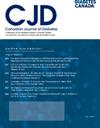成人糖尿病肾病患者全身免疫炎症指数与死亡风险的关系,NHANES 1999-2018。
IF 2.3
4区 医学
Q3 ENDOCRINOLOGY & METABOLISM
引用次数: 0
摘要
背景:免疫炎症在糖尿病肾病(DKD)的发病机制中起着至关重要的作用,但其确切的评价指标尚不明确。本文研究了DKD患者全身免疫炎症指数(SII)与死亡风险之间的关系,并探讨了性别差异对其的影响。方法:研究1999-2018年国家健康与营养检查调查(NHANES)数据中DKD患者的数据,并从NHANES相关文件中确定死亡原因。加权Cox模型评估全因死亡率、心血管死亡率和心脑血管死亡率的风险比(HR),并通过平滑曲线将这些关联可视化。结果:SII平均水平为634.20 (10 m3 /uL)。在273,422人月期间记录了1,283例死亡,其中396例死于心血管疾病,461例死于心脑血管疾病。Q5分位数SII水平越高,死亡率越高(P < 0.01)。SII水平的趋势显示,>水平为697(10³/uL)时全因死亡风险增加,>水平为717.8(10³/uL)时心血管风险增加,>水平为650.0(10³/uL)时心脑血管风险增加。男性SII值为500 ~ 660(10³/uL),女性SII值为700 ~ 760(10³/uL),死亡率呈上升趋势。结论:高SII水平与DKD患者全因、心血管和心脑血管死亡风险增加之间存在显著关联。此外,虽然男性的SII水平较低,但其死亡率高于女性。本文章由计算机程序翻译,如有差异,请以英文原文为准。
Associations of Systemic Immune-Inflammation Index With Mortality Risk Among Adults in Diabetic Kidney Disease, NHANES 1999 to 2018
Objectives
Immune inflammation plays a crucial role in the pathogenesis of diabetic kidney disease (DKD), but an exact assessment of indicators remains undefined. In this study we address the link between systemic immune-inflammation index (SII) and mortality risk in DKD, and we explore the effect of sex disparities.
Methods
Data from patients with DKD from the National Health and Nutritional Examination Surveys (NHANES, 1999 to 2018) were studied and their causes of death were identified from NHANES-related files. A weighted Cox model was used to evaluate hazard ratios for all-cause, cardiovascular, and cardiocerebrovascular mortality, and these associations were visualized by smoothing curves.
Results
The average SII was 634.20 (103/μL). There were 1,283 deaths recorded during 273,422 person-months (396 were cardiovascular related and 461 were cardiocerebrovascular related). Higher SIIs in the fifth quintile were significantly associated with increased mortality (p<0.01). SII trends showed an increased risk of all-cause mortality of >697.0 (103/μL), cardiovascular risk of >717.8 (103/μL), and cardiocerebrovascular risk of >650.0 (103/μL). Mortality increased when SII reached 500 to 660 (103/μL) in men and 700 to 760 (103/μL) in women.
Conclusions
There was a significant association between higher SII and increased risk of all-cause, cardiovascular, and cardiocerebrovascular mortality in DKD patients. In addition, although men had lower SII, their mortality was higher than that of women.
求助全文
通过发布文献求助,成功后即可免费获取论文全文。
去求助
来源期刊

Canadian Journal of Diabetes
ENDOCRINOLOGY & METABOLISM-
CiteScore
4.80
自引率
4.00%
发文量
130
审稿时长
54 days
期刊介绍:
The Canadian Journal of Diabetes is Canada''s only diabetes-oriented, peer-reviewed, interdisciplinary journal for diabetes health-care professionals.
Published bimonthly, the Canadian Journal of Diabetes contains original articles; reviews; case reports; shorter articles such as Perspectives in Practice, Practical Diabetes and Innovations in Diabetes Care; Diabetes Dilemmas and Letters to the Editor.
 求助内容:
求助内容: 应助结果提醒方式:
应助结果提醒方式:


